Introduction

Jewelry has captivated human imagination for thousands of years, from ancient Egyptian amulets to modern diamond masterpieces. Today’s most prestigious jewelry houses combine centuries-old craftsmanship with cutting-edge design, creating pieces that symbolize wealth, status, and artistry. These brands don’t just sell accessories – they sell heritage, craftsmanship, and dreams that sparkle on red carpets and in everyday life.
Buccellati: Renaissance-Inspired Golden Masterpieces
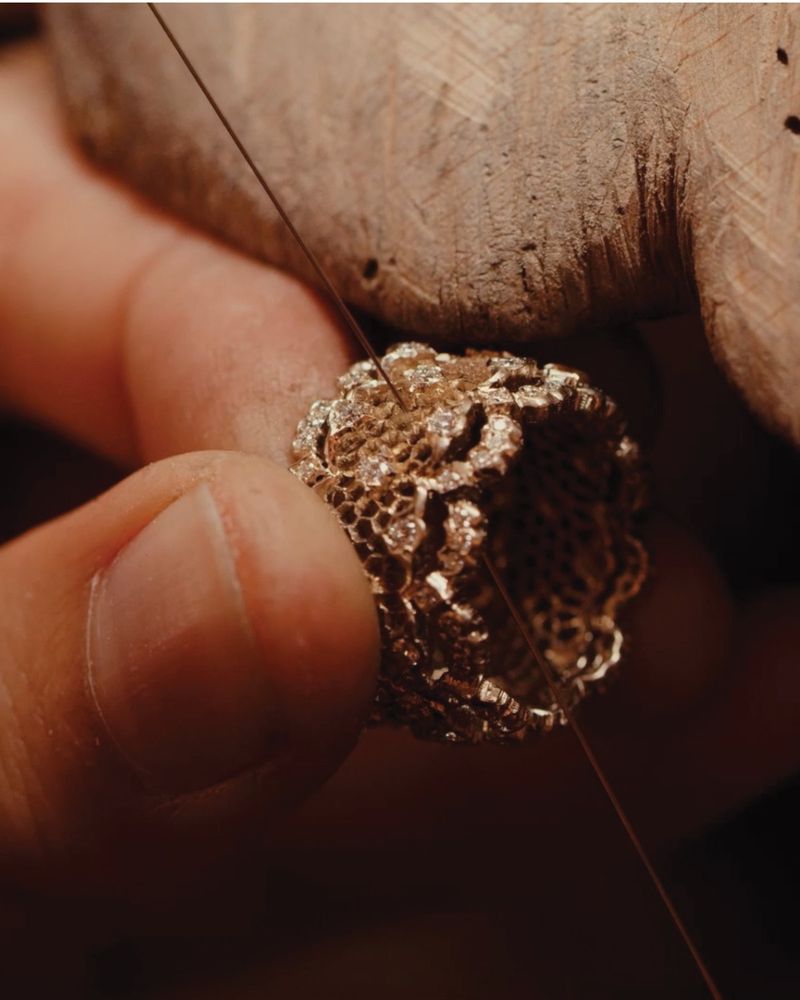
Founded in Milan in 1919, Buccellati creates jewelry that feels like wearing Renaissance art. The brand’s signature honeycomb technique transforms solid gold into delicate, fabric-like textures that catch light in mesmerizing ways. Each Buccellati piece requires hundreds of hours of meticulous hand-engraving by master craftsmen using tools and techniques barely changed since the Renaissance. Their one-of-a-kind creations often feature nature-inspired motifs – butterflies, flowers, and leaves – rendered with extraordinary detail. While Buccellati may not have the global name recognition of some larger houses, collectors and connoisseurs revere it for maintaining Italian goldsmithing traditions that might otherwise be lost to history. The brand’s relative exclusivity makes each piece feel like owning a precious secret.
Boucheron: The Pioneer of Place Vendôme
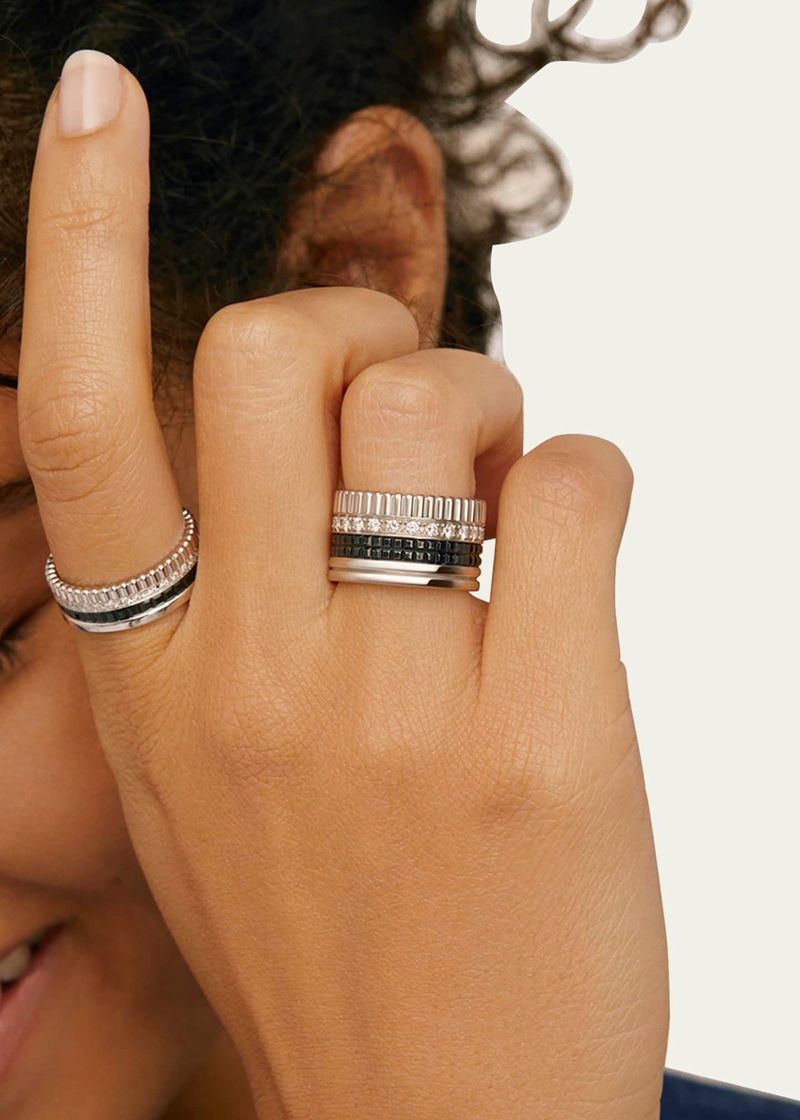
Boucheron made history in 1893 as the first jeweler to establish a boutique in Paris’s iconic Place Vendôme, the epicenter of high jewelry. Founded by Frédéric Boucheron in 1858, the maison gained fame for its innovative use of colored gemstones and nature-inspired designs that broke traditional jewelry rules. The brand’s signature Quatre ring features four distinct bands representing different goldsmithing techniques – a perfect symbol of Boucheron’s technical mastery. Their Question Mark necklace, first created in 1879, remains revolutionary even today with its springy, clasp-free design that wraps effortlessly around the neck. Animal motifs appear throughout Boucheron’s collections, particularly the hedgehog and the snake – symbols of protection that founder Frédéric believed brought good fortune to wearers.
Chopard: Red Carpet Royalty with a Conscience

When the Cannes Film Festival’s stars glide down the red carpet, many sparkle in Chopard creations. This Swiss brand, founded in 1860, masterfully bridges two luxury worlds – high-end watchmaking and spectacular jewelry – with equal brilliance. Chopard made waves in 2013 by pioneering ethical gold sourcing in an industry not known for transparency. Today, they craft all their jewelry and watches from 100% ethical gold, setting a new standard for responsible luxury. Their Happy Diamonds collection features playful loose diamonds that dance between two sapphire crystals – a technical innovation that perfectly captures Chopard’s joyful spirit. Though the brand enjoys tremendous respect within fashion and cinema circles, its dual focus on timepieces and jewelry has kept it from achieving the household-name status of more jewelry-focused competitors.
Piaget: Where Watchmaking Meets Jewelry Artistry
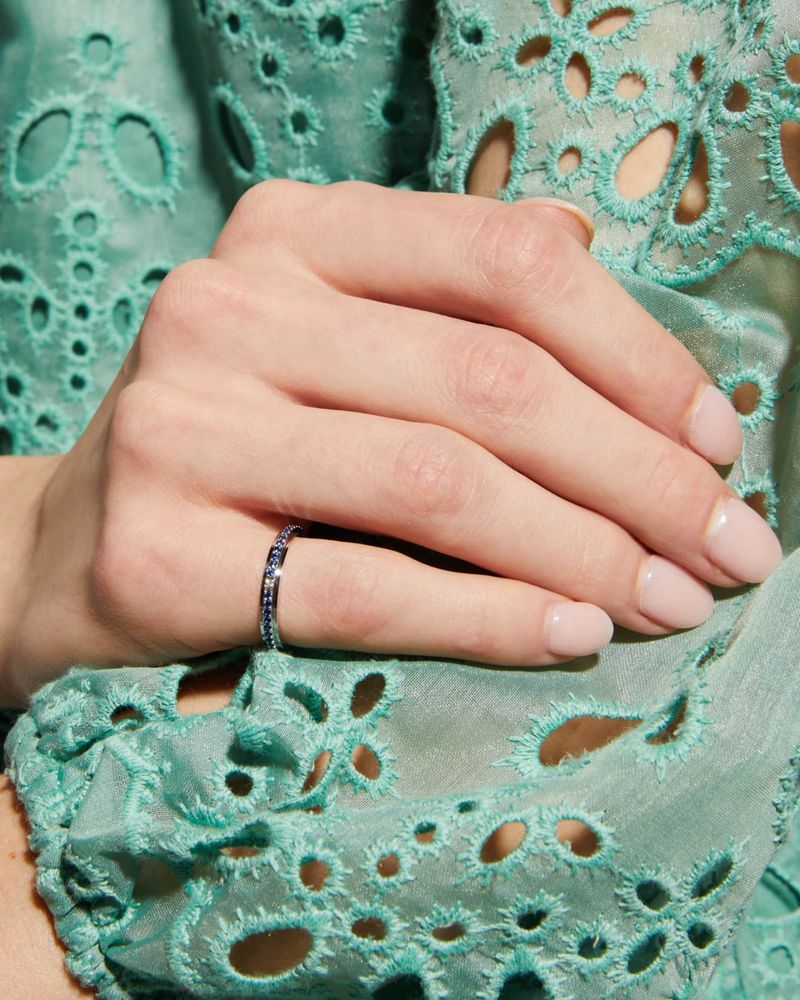
Piaget began as a watchmaking workshop in the Swiss Jura mountains in 1874, but transformed into a jewelry powerhouse during the swinging sixties. The brand made its name by creating the world’s thinnest watches, then applied that same technical precision to revolutionary jewelry designs. Piaget’s signature style emerged in the 1960s with bold, colorful stone combinations and textured gold work that captured the era’s free-spirited vibe. Their famous gold craftsmen create unique “fur,” “bark,” and “palace” textures that transform precious metal into wearable art. The iconic Possession ring, with its rotating bands, offers an addictively tactile experience that has attracted devotees worldwide. Though celebrated for combining mechanical ingenuity with jewelry creativity, Piaget remains better known for watches in many markets, keeping it from higher ranking despite its extraordinary craftsmanship.
Graff: The Diamond Empire Built on Extraordinary Stones
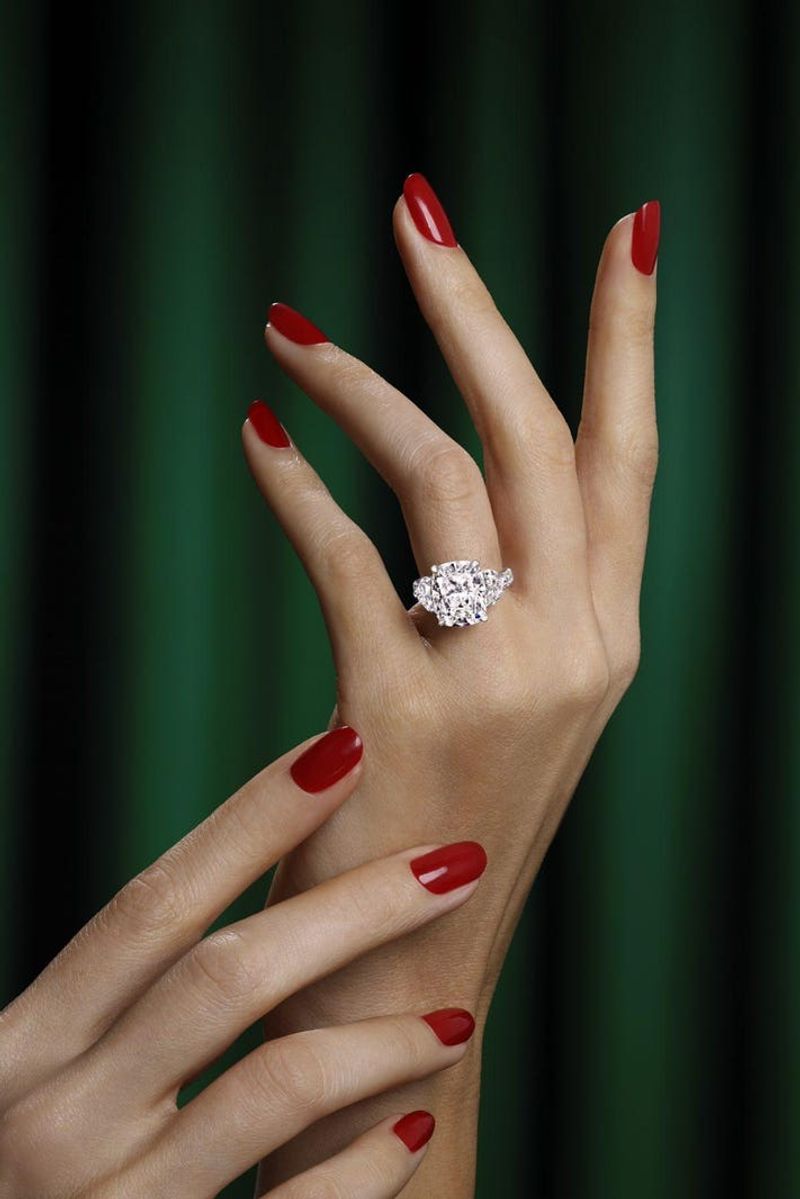
Laurence Graff started with nothing, polishing diamonds in London’s Hatton Garden as a teenager. Today, his name is synonymous with the world’s most extraordinary gemstones. Graff has handled more record-breaking diamonds than perhaps any other jeweler in history. The company controls every aspect of diamond creation – from mining rough stones to cutting, polishing, and setting them into finished pieces. This vertical integration allows Graff to work with truly exceptional gems that other jewelers rarely encounter. When the 1,109-carat Lesedi La Rona diamond was discovered in 2015 – the second-largest rough diamond ever found – it was Graff who purchased it for $53 million. Despite handling stones that make headlines worldwide, Graff’s ultra-exclusive business model means many jewelry buyers never interact with the brand, limiting its broader popularity.
Mikimoto: The Pearl Revolution That Changed Jewelry Forever

Before Kokichi Mikimoto, perfect pearls were so rare that only royalty could afford them. In 1893, this Japanese visionary created the world’s first cultured pearl, democratizing access to what was once nature’s rarest gem. The imperial families of Japan gifted Mikimoto pearls to foreign dignitaries, spreading the brand’s fame worldwide. Mikimoto’s Pearl Island in Toba, Japan still produces some of the world’s finest Akoya pearls using techniques refined over more than a century. The brand’s signature strand – perfectly matched white pearls with an unmistakable luster – has adorned first ladies, Hollywood stars, and brides across generations. Though Mikimoto revolutionized the pearl industry and maintains unmatched prestige among pearl connoisseurs, its specialized focus has kept it from achieving the broader recognition of more diversified jewelry houses.
Van Cleef & Arpels: Poetic Jewelry With Mechanical Magic

Van Cleef & Arpels creates jewelry that tells stories. Founded in 1896 when Estelle Arpels married Alfred Van Cleef, this Parisian house transforms fairy tales, ballet, and nature into wearable poetry. Their famous Mystery Setting technique, patented in 1933, allows gemstones to be set with no visible metal supports – a feat still considered among jewelry’s greatest technical achievements. The four-leaf clover Alhambra necklace, introduced in 1968, has become one of jewelry’s most recognizable designs. Celebrities from Grace Kelly to Elizabeth Taylor have cherished Van Cleef creations, helping spread the brand’s mystique beyond jewelry insiders. Van Cleef’s Automaton pieces – like brooches with birds that actually move their wings – demonstrate how the house combines childlike wonder with mechanical ingenuity. Recently, the brand has gained increasing global popularity, especially in Asian markets.
David Yurman: America’s Jewelry Success Story

David Yurman began as a sculptor, not a jeweler. In 1980, he created his signature Cable bracelet – twisted metal resembling a helix – for his wife Sybil, never expecting it would launch an American jewelry empire. The design’s combination of classical forms with modern sensibility created an entirely new category: artistic jewelry for everyday wear. Unlike European houses with centuries of history, Yurman built his brand within a generation, proving American design could compete with Old World craftsmanship. His pieces feature distinctive mixed metals, colored gemstones, and that iconic twisted cable motif that appears throughout collections. Yurman pioneered the concept of accessible luxury jewelry – pieces fine enough for special occasions yet durable enough for daily wear. This approach has made the brand especially popular among professional women purchasing jewelry for themselves rather than waiting to receive it as gifts.
Harry Winston: The Legendary King of Diamonds
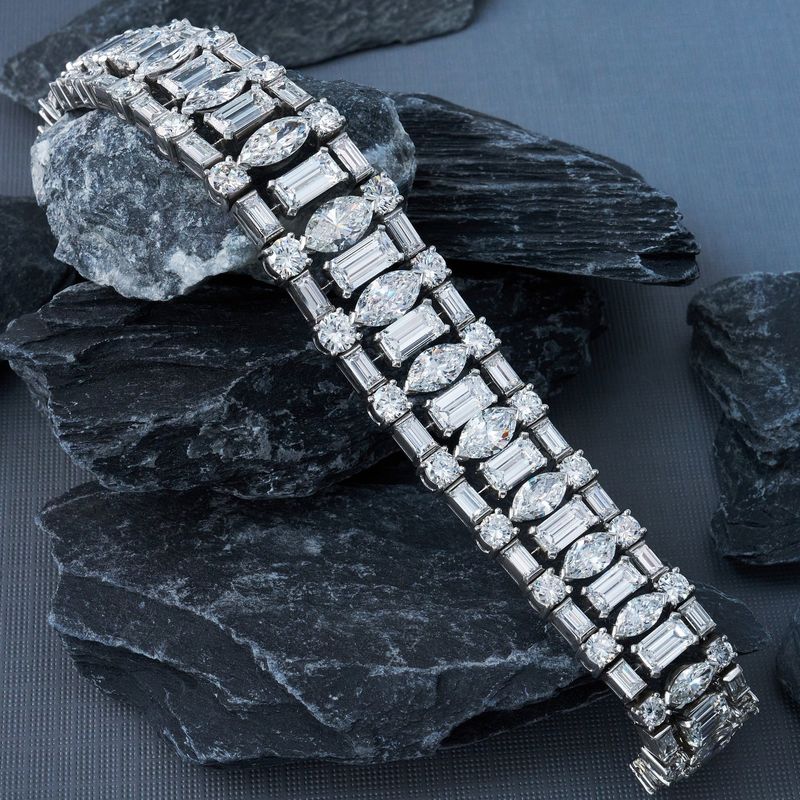
Harry Winston’s name carries such mystique that Marilyn Monroe mentioned him by name in her famous song “Diamonds Are a Girl’s Best Friend.” Founded in 1932, the house quickly became known for acquiring and reimagining the world’s most famous diamonds, including the Hope Diamond, which Winston donated to the Smithsonian in 1958. Winston revolutionized jewelry design by focusing on the gems rather than the settings. His minimalist platinum mountings were designed to “let the diamonds do the talking” – a philosophy that transformed how high jewelry was designed. The brand continues this tradition with pieces that showcase extraordinary stones with minimal metal visible. The Winston name remains synonymous with Hollywood glamour – the company has lent jewels worth millions for the Academy Awards so consistently that they’ve earned the nickname “jeweler to the stars.” Despite this fame, the brand’s ultra-high price points keep it less accessible than mass-market competitors.
De Beers: The Diamond Empire That Created Modern Engagement Traditions

De Beers didn’t just sell diamonds – they created the entire modern diamond engagement ring tradition. Their 1947 slogan “A Diamond is Forever” transformed cultural expectations worldwide, convincing generations that diamond rings were the only proper symbol of engagement. For most of the 20th century, they controlled up to 85% of the world’s rough diamond supply. Though primarily known as a mining company, De Beers launched their own jewelry line in 2002, creating pieces that showcase their unparalleled access to exceptional stones. Their Talisman collection features both polished and rough diamonds together – a striking combination no other jeweler could easily achieve. De Beers pioneered diamond grading standards and technologies to detect lab-grown stones, shaping how we understand diamond quality today. Despite this enormous industry influence, their relatively recent entry into branded jewelry keeps them from ranking higher on popularity lists.
Cartier: The Jeweler of Kings and King of Jewelers
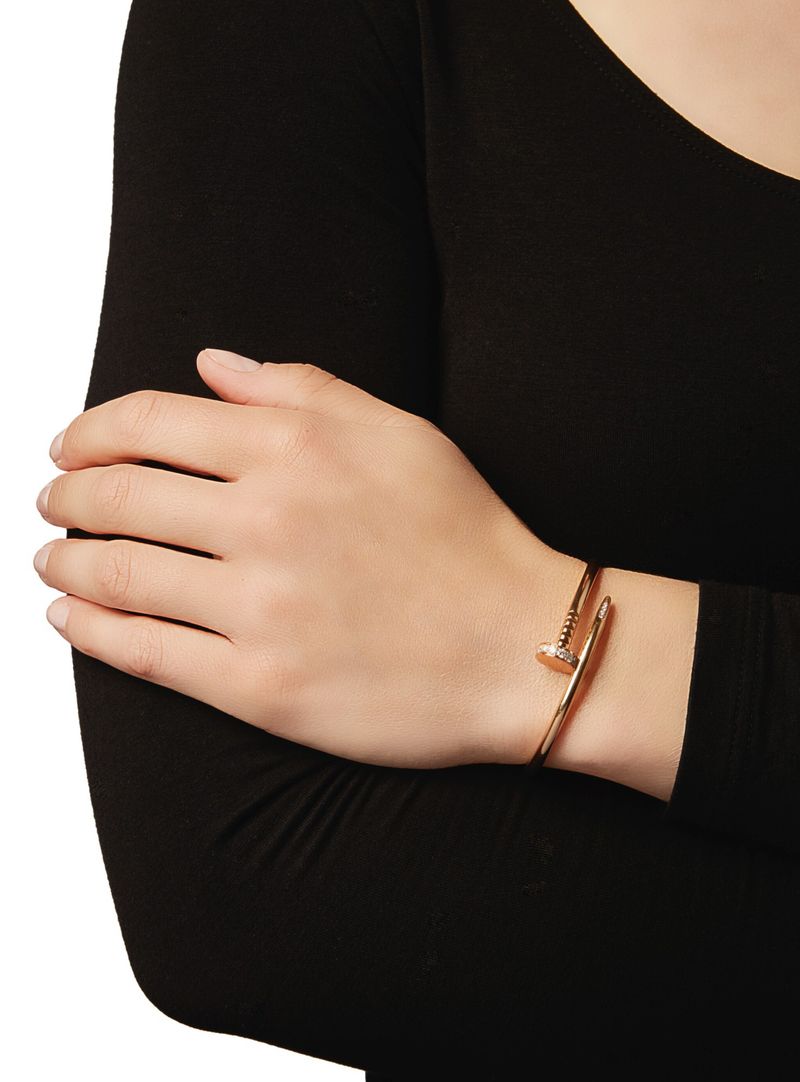
King Edward VII of England declared Cartier “the jeweler of kings and the king of jewelers” – a reputation the Parisian house has maintained since 1847. Cartier created the first practical wristwatch (the Santos) in 1904, and their iconic Tank watch remains virtually unchanged since 1917, demonstrating the timelessness of their designs. The Cartier Love bracelet, introduced in 1969 with its distinctive screws that “lock” onto the wearer’s wrist, has become one of the most recognizable and copied jewelry designs in history. Its waiting list and secondary market value have only enhanced its status symbol appeal. The brand’s panther motif, first appearing in 1914, continues as a signature across collections. Cartier’s red boxes are as coveted as the jewelry inside them. The brand’s royal warrants, historic celebrity clients, and unmistakable design language have cemented its position as one of the world’s most prestigious and recognizable luxury names.
Bulgari: Bold Italian Glamour With Ancient Roman Roots
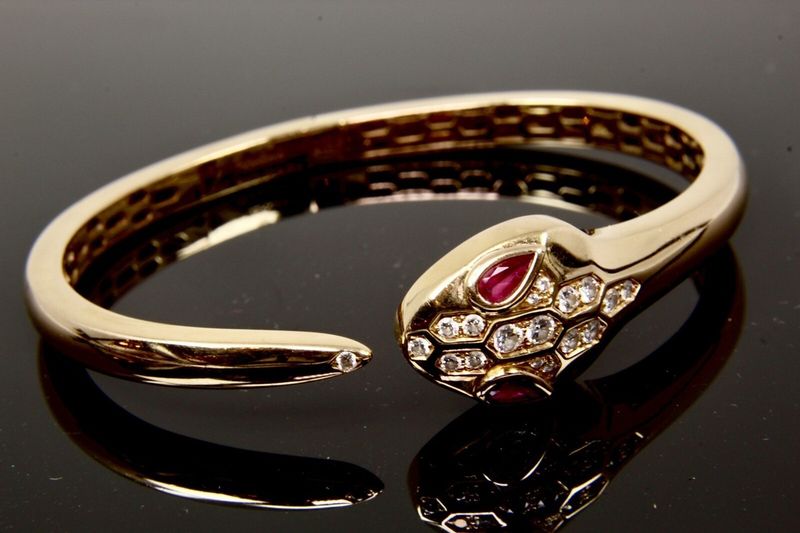
Bulgari (often styled as BVLGARI in a nod to ancient Roman inscriptions) brings unmistakable Italian exuberance to high jewelry. Founded in 1884 by Greek silversmith Sotirio Bulgari, the brand reached international fame in the 1950s-60s when stars like Elizabeth Taylor and Sophia Loren wore their bold, colorful designs during Rome’s “La Dolce Vita” era. Unlike French jewelry houses that emphasize delicate settings, Bulgari embraces audacious color combinations, substantial proportions, and ancient Roman motifs. Their Serpenti collection, featuring coiled snake bracelets that wrap around the wrist, has become one of jewelry’s most recognizable designs, constantly reinvented since the 1940s. Bulgari pioneered the use of cabochon-cut colored gemstones in high jewelry when most competitors focused exclusively on diamonds. This distinctive approach to color, combined with their Mediterranean sensuality, gives Bulgari pieces an unmistakable presence that’s instantly recognizable across a room.
Tiffany & Co.: The Blue Box That Changed American Luxury Forever
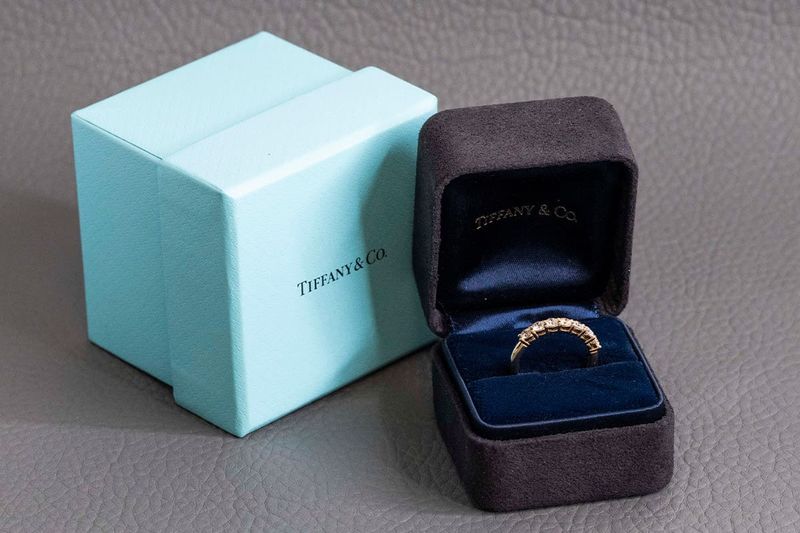
That little blue box with the white ribbon has become as recognizable as the jewelry inside it. Founded in 1837, Tiffany & Co. transformed American luxury, creating the country’s first mail-order catalog and standardizing the 925 silver purity mark. Their flagship store on New York’s Fifth Avenue became a tourist destination after Audrey Hepburn’s iconic “Breakfast at Tiffany’s” scene. Tiffany’s six-prong solitaire engagement ring setting, introduced in 1886, revolutionized engagement rings by lifting diamonds above the band to maximize light reflection. This design, still their bestseller, has been copied by virtually every jeweler worldwide. The brand’s blue color is so distinctive it has its own Pantone number (1837, the year of the company’s founding). Tiffany masterfully balances heritage with contemporary relevance, collaborating with designers like Elsa Peretti and Paloma Picasso while maintaining classics like their Heart Tag charm bracelet and Atlas collection.
Swarovski: Crystal Brilliance for the Masses

Austrian Daniel Swarovski revolutionized the jewelry world in 1895 by inventing a machine that cut crystal more precisely than by hand. This innovation made sparkly accessories available to everyday people when previously only the wealthy could afford diamonds and precious stones. Swarovski occupies a unique position between fashion and fine jewelry – their pieces contain no precious metals or gemstones yet are sold in luxury department stores worldwide. Their crystal figurines became collector’s items, with annual limited editions creating a secondary market of enthusiasts trading rare pieces. The brand’s ability to collaborate with designers from Alexander McQueen to Supreme keeps them culturally relevant across generations. Their Crystaldust bracelet and swan logo are instantly recognizable globally. With over 2,800 stores worldwide and products at every price point from $25 keychains to $20,000 chandeliers, Swarovski reaches consumers no traditional jewelry brand can match.
Chanel: Fashion’s Most Iconic Name Conquers Fine Jewelry
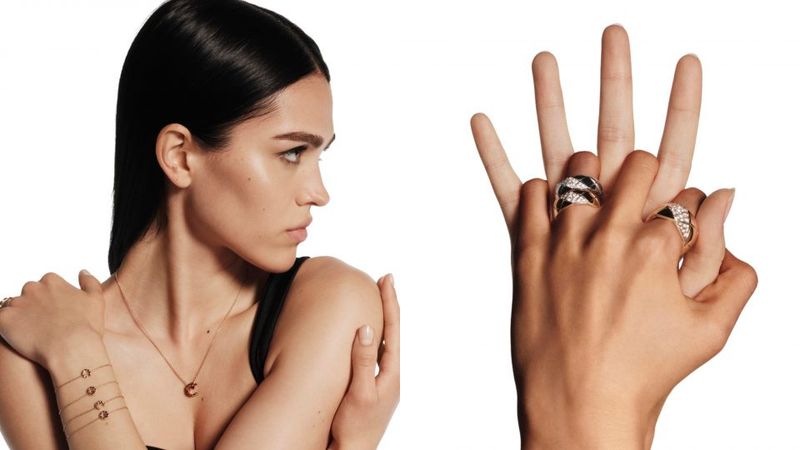
When Coco Chanel introduced costume jewelry in the 1920s – mixing real gems with glass ones – she broke all the rules about what “proper” jewelry should be. In 1932, she launched her first fine jewelry collection, “Bijoux de Diamants,” featuring stars, feathers, and ribbon motifs that still influence Chanel’s designs today. Though relatively new to fine jewelry (their dedicated division launched in 1993), Chanel leverages their massive fashion recognition to dominate the category. Their Camélia, Comète, and Coco Crush collections feature instantly recognizable motifs from Chanel’s fashion history. The interlocking CC logo gives even simple pieces enormous brand recognition and status value. Chanel’s ability to cross fashion, beauty, and jewelry categories creates unmatched brand awareness. Their jewelry appears in their fashion shows, advertisements, and boutiques worldwide, giving them marketing reach traditional jewelry houses can’t match – making them the world’s most popular prestigious jewelry brand.
Chaumet
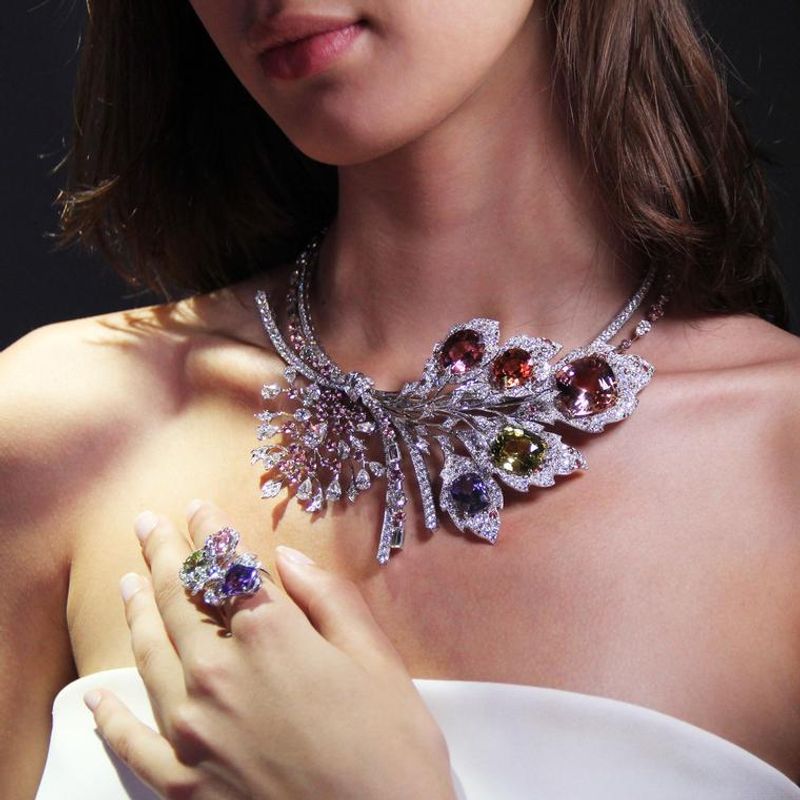
Chaumet, a beacon of French elegance, has graced the necks and crowns of royalty since 1780. This Parisian maison is renowned for its exquisite tiaras, each piece a testament to the fine art of jewelry-making. With roots entwined in French history, Chaumet’s creations echo the opulence of the Napoleonic court.
Each jewelry piece, from diamond-laden necklaces to intricately designed rings, showcases a mastery of form and function. The brand captures the essence of sophistication, blending tradition with innovation to captivate modern connoisseurs.
Chaumet remains a symbol of timeless luxury, crafting jewels that tell stories of elegance and grandeur.

Comments
Loading…